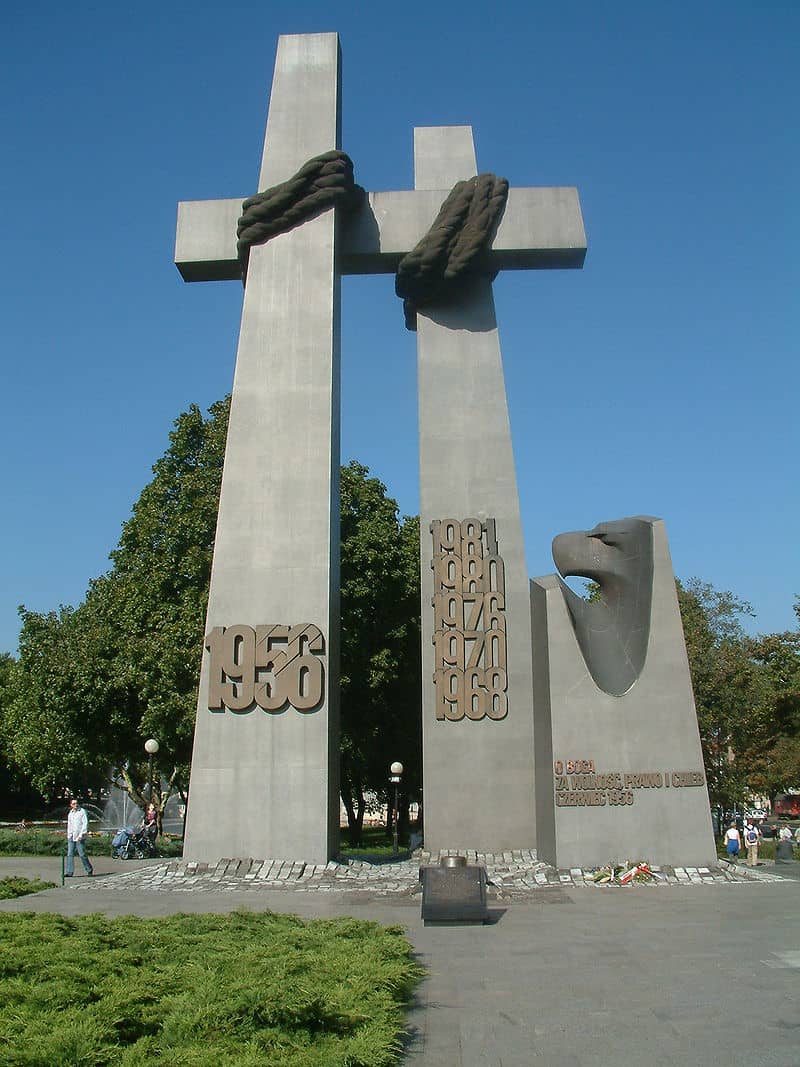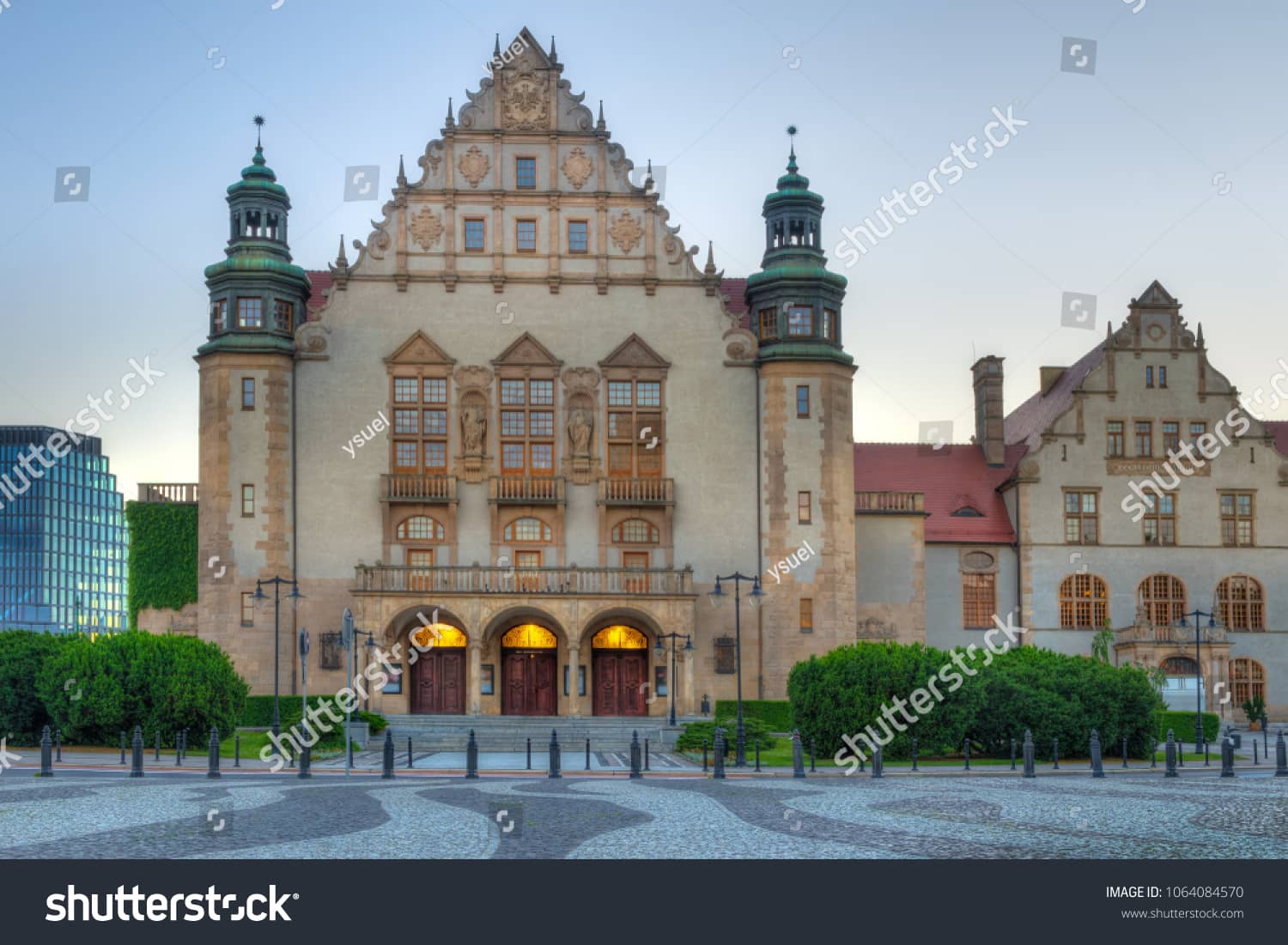Poznań 1956 Crosses Monument
A powerful monument commemorating the 1956 Poznań protests, a key moment in Poland's fight for freedom against communist rule.

Highlights
Must-see attractions

Social
From TikTok & Reddit
Best Time
Best light for photos
Poznań 1956 Crosses Monument
Best Time
Best light for photos

Highlights
Must-see attractions
A powerful monument commemorating the 1956 Poznań protests, a key moment in Poland's fight for freedom against communist rule.
"A powerful testament to the fight for freedom and Polish resilience."
Reflect on History
Take time to understand the monument's context; it's a powerful symbol of resistance. :book:
Combine with Nearby Sites
Visit the Imperial Palace and Adam Mickiewicz University for a richer historical experience. :world_map:
Highlights
Discover the most iconic attractions and experiences
The 1956 Crosses
Adam Mickiewicz Square
Towering crosses symbolizing the 1956 Poznań uprising, a powerful testament to the fight against oppression.

Commemoration of Worker Protests
Base of the monument
Engraved dates and symbols mark the 1956 strikes and the broader struggle for liberty, including Solidarity.

Adam Mickiewicz Square
Surrounding area
A grand public space that provides a fitting backdrop for this significant historical monument.
Plans like a pro.
Thinks like you
Planning Your Visit
Understand the Monument's Significance
Location and Accessibility
Best Times
Insider Tips
from TikTok, Instagram & Reddit
Reflect on History
Take time to understand the monument's context; it's a powerful symbol of resistance. :book:
Combine with Nearby Sites
Visit the Imperial Palace and Adam Mickiewicz University for a richer historical experience. :world_map:
Respectful Visit
This is a solemn memorial; approach with respect and quiet contemplation. :pray:
Tips
from all over the internet
Reflect on History
Take time to understand the monument's context; it's a powerful symbol of resistance. :book:
Combine with Nearby Sites
Visit the Imperial Palace and Adam Mickiewicz University for a richer historical experience. :world_map:
Respectful Visit
This is a solemn memorial; approach with respect and quiet contemplation. :pray:
What Travellers Say
Reviews Summary
Visitors consistently highlight the monument's profound historical significance and its powerful symbolism of resistance against oppression. Its prominent location in Adam Mickiewicz Square is also appreciated, offering a grand setting for reflection. While generally well-regarded, some visitors note that a deeper understanding of the historical context enhances the experience.
"The 1956 Poznań protests, also known as Poznań June (Polish: Poznański Czerwiec), were the first of several massive protests against the communist government of the Polish People's Republic. Demonstrations by workers demanding better working conditions began on 28 June 1956 at Poznań's Cegielski Factories and were met with violent repression.
The monument commemorates the events of Black Thursday (June 28, 1956), when there was a demonstration of workers from Zakłady Cegielski in Poznań (then called Zakłady im. Józefa Stalina Poznań - ZISPO), who organized a strike in protest against the economic situation and social injustice."
Mustafa Arikan
"Monument to the struggle against Stalinism in Poland, focussing on the key dates, from the strikes and demonstrations in Poznan in 1956 to Solidarnosc 1980-81.
In Adam Mickiewicz Square, between Adam Mickiewicz University and the Imperial Palace."
David Smith
"Nice and huge monument in a square just behind the castle"
Milda Drums
What People Like
What People Dislike
Frequently Asked Questions
🚇 🗺️ Getting There
The monument is centrally located in Adam Mickiewicz Square, easily reachable by public transport or a pleasant walk from the Old Market Square. Many tram lines stop nearby, making it very accessible for tourists exploring Poznań.
While direct parking at the monument is limited, there are several paid parking lots and garages in the vicinity of Adam Mickiewicz Square and the nearby Imperial Palace. It's often easier to use public transport.
🎫 🎫 Tickets & Entry
No, the monument and Adam Mickiewicz Square are public spaces and are free to visit at any time. There are no admission fees.
As an outdoor monument in a public square, it is accessible 24/7. However, visiting during daylight hours is recommended for better viewing and photography.
🎫 🧭 Onsite Experience
A visit typically takes about 30 minutes to an hour, allowing time to appreciate the monument's scale, read any inscriptions, and reflect on its historical significance.
It commemorates the Poznań June 1956 protests, the first major uprising against the communist regime in Poland. It also honors subsequent struggles for freedom, including the Solidarity movement.
While there might not be specific tours solely for the monument, many city tours of Poznań include a stop here, providing historical context. Check with local tour operators.
Yes, the monument is quite photogenic, especially during the day. The surrounding square and architecture also offer good photographic opportunities.
🍽️ 🍽️ Food & Dining
Absolutely! Adam Mickiewicz Square is surrounded by cafes, restaurants, and eateries, offering a range of Polish and international cuisine. You're spoiled for choice.
For Different Travelers
Tailored advice for your travel style
History Enthusiasts
This monument is more than just a structure; it's a symbol of Polish resilience and the fight for freedom. Its commemoration of the broader struggle against Stalinism and the rise of Solidarity makes it a powerful educational site. Take your time to read any available information or consider a guided tour that includes this significant landmark to fully grasp its historical weight.
Cultural Explorers
Located in the impressive Adam Mickiewicz Square, the monument is part of a rich cultural tapestry. The surrounding architecture, including the university and the palace, adds to the area's significance. It’s an ideal spot for a thoughtful stroll, allowing you to absorb the local atmosphere and appreciate the blend of historical commemoration and contemporary urban life.
Deep Dives
In-depth insights and expert knowledge
The Historical Context of the 1956 Poznań Protests
Beyond the 1956 events, the monument also broadly commemorates the struggle against Stalinism in Poland and the rise of the Solidarity movement in the 1980s. This broader symbolism connects the specific historical event to a larger narrative of Polish resilience and the fight for democracy. Visitors often feel a profound sense of history and national pride when standing before it, recognizing its importance not just for Poznań, but for the entire nation's journey towards independence.
Experiencing Adam Mickiewicz Square
Many visitors find the square to be a vibrant hub, especially during warmer months, with people gathering and enjoying the atmosphere. It's a place where history meets daily life. The proximity to other key landmarks means you can easily spend a significant part of your day exploring the area, moving from the solemnity of the monument to the grandeur of the university and the palace. It’s a well-rounded historical and cultural experience in the heart of Poznań.



Social
from TikTok, Instagram & Reddit